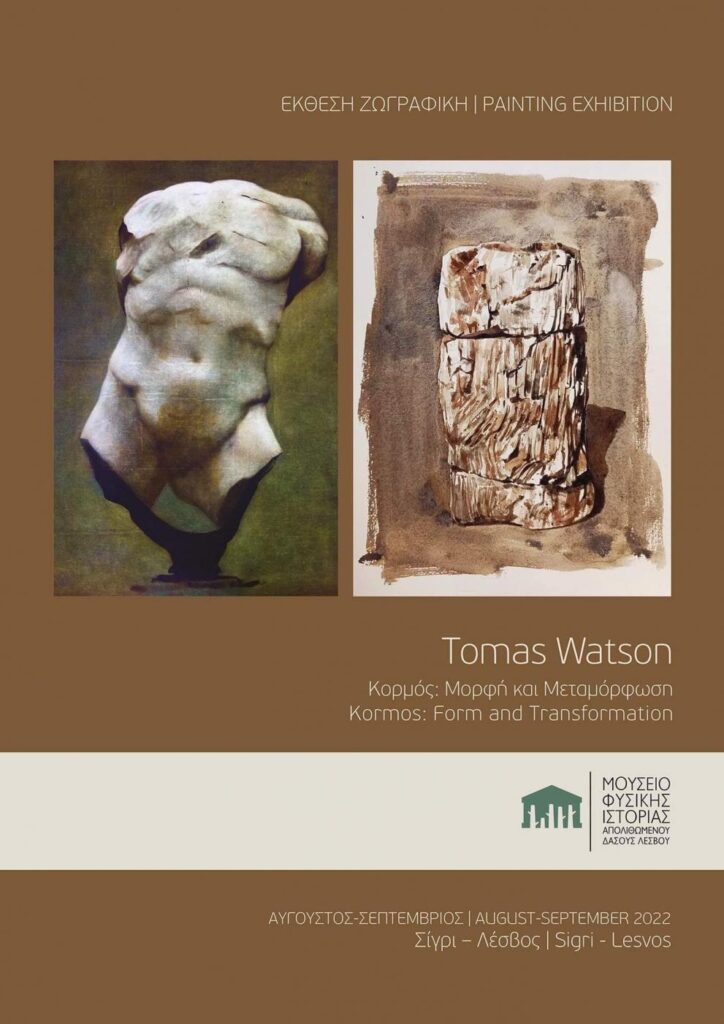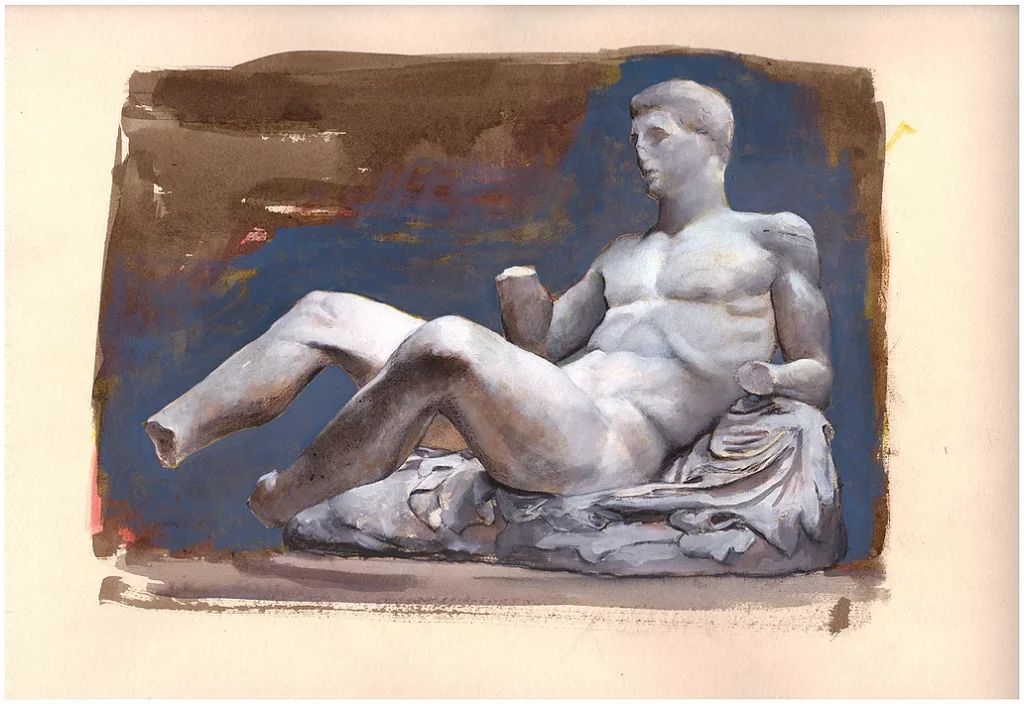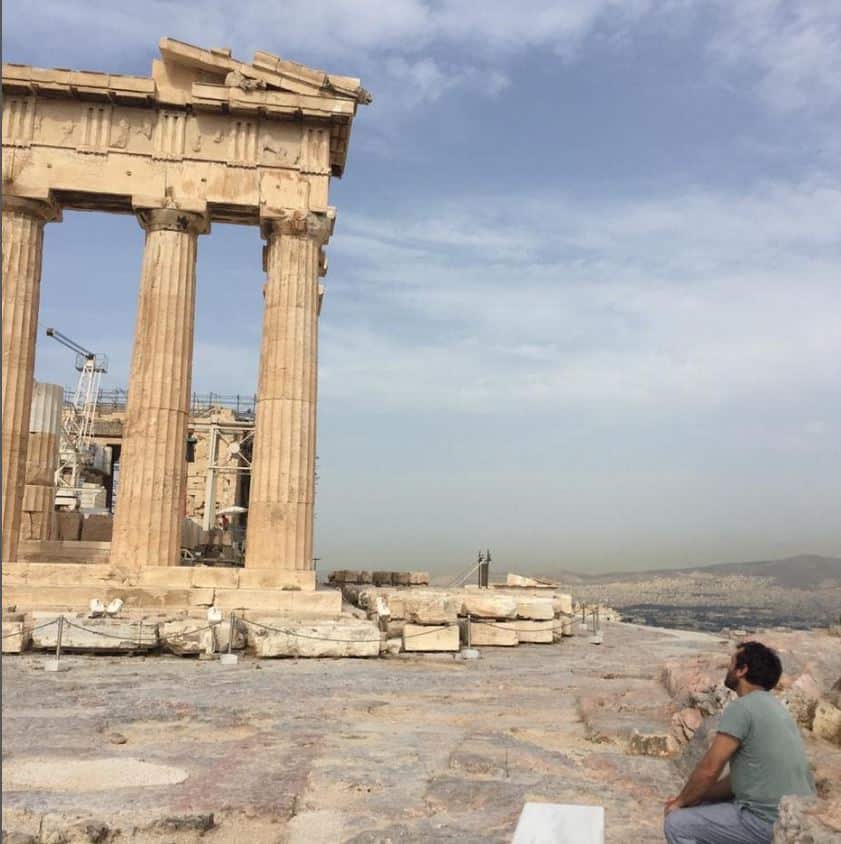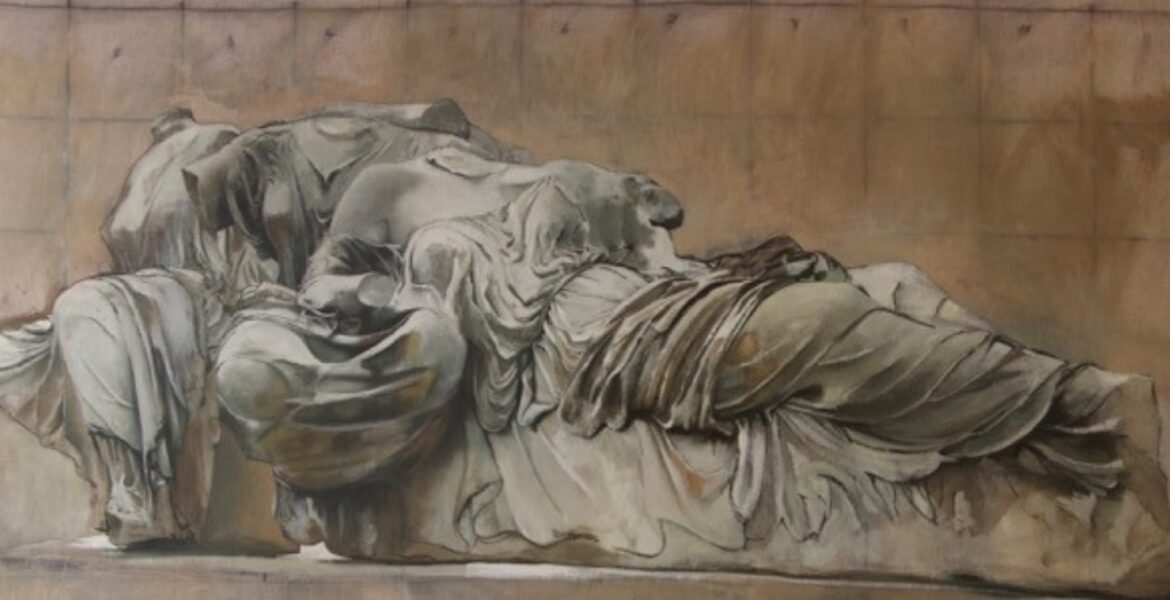The Parthenon and its sculptures have inspired artists over the centuries. In a just opened exhibition at the Museum of Natural History in Sigri on the island of Lesvos the acclaimed UK painter and engraver Tomas Watson has unveiled his own artistic depictions of the Parthenon Sculptures.

The exhibition, Kormos (Torso): Form and Transformation, captures the juxtaposition of natural and sculptured forms. A 20-million-year old tree now a stone trunk. A classical sculpture of the human form eroded back to a block of marble. The exhibition seeks to create a dialogue between these fragments, despite the disintegration and change and the passing of time.
Tomas Watson has studied and painted the human body over the years but this show takes it to another level. Alongside his paintings of human torsos are paintings and studies of the Parthenon Sculptures which were originally located on the east and west pediments of the Parthenon before they were controversially removed by Lord Elgin’s agents at the beginning of the nineteenth century and ended up in the British Museum where they remain on display.

Tomas Watson has isolated the sculptures and placed them in a new context of colorful backgrounds, echoing their forced physical displacement by Elgin and their continued estrangement from their natural context in Athens.

According to the artist’s partner, Efrosini (Cindy) Camatsos, Tomas has imbued inanimate objects of stone with the same richness and textures so as to render them as real or even more so than human torsos painted from a live model. The viewer stands in awe of the drapery, the movement, the expression of the sculptures that were created and/or inspired by the master sculptor, Phidias, more than 2,500 years ago.
As Camatsos notes:
“Watson has captured the immediacy of the first creative act, imbuing statues two thousand years old with the vitality of the new.”

Tomas Watson has made Greece his home after his first trip in 1994 whilst on a scholarship under the auspices of the Slade School of Fine Art. He initially lived in Astypalaia and later spent time on Nisyros, Andros, Lesvos and Athens. He operates in relative obscurity out of a studio in a neoclassical building in Thiseio in Athens but his first love is the scenic village of Sigri in Lesvos where the exhibition was opened on 26 August and will run right through September.

The spirit of the Parthenon Sculptures are brilliantly captured in the vibrancy of the oil paints, brush strokes, textured glazing and other techniques employed by Tomas Watson on seeing the Elgin Marbles and where they truly belong.

Hopefully after the exhibition on Lesvos the works of Tomas Watson are able to find a temporary exhibition space closer to the Acropolis Museum as yet another reminder of the moral imperative for the return of the Phidian forms from the British Museum to their spiritual home in Athens.
George Vardas is the co-Vice President of the Australian Parthenon Association and co-founder of the Acropolis Research Group


